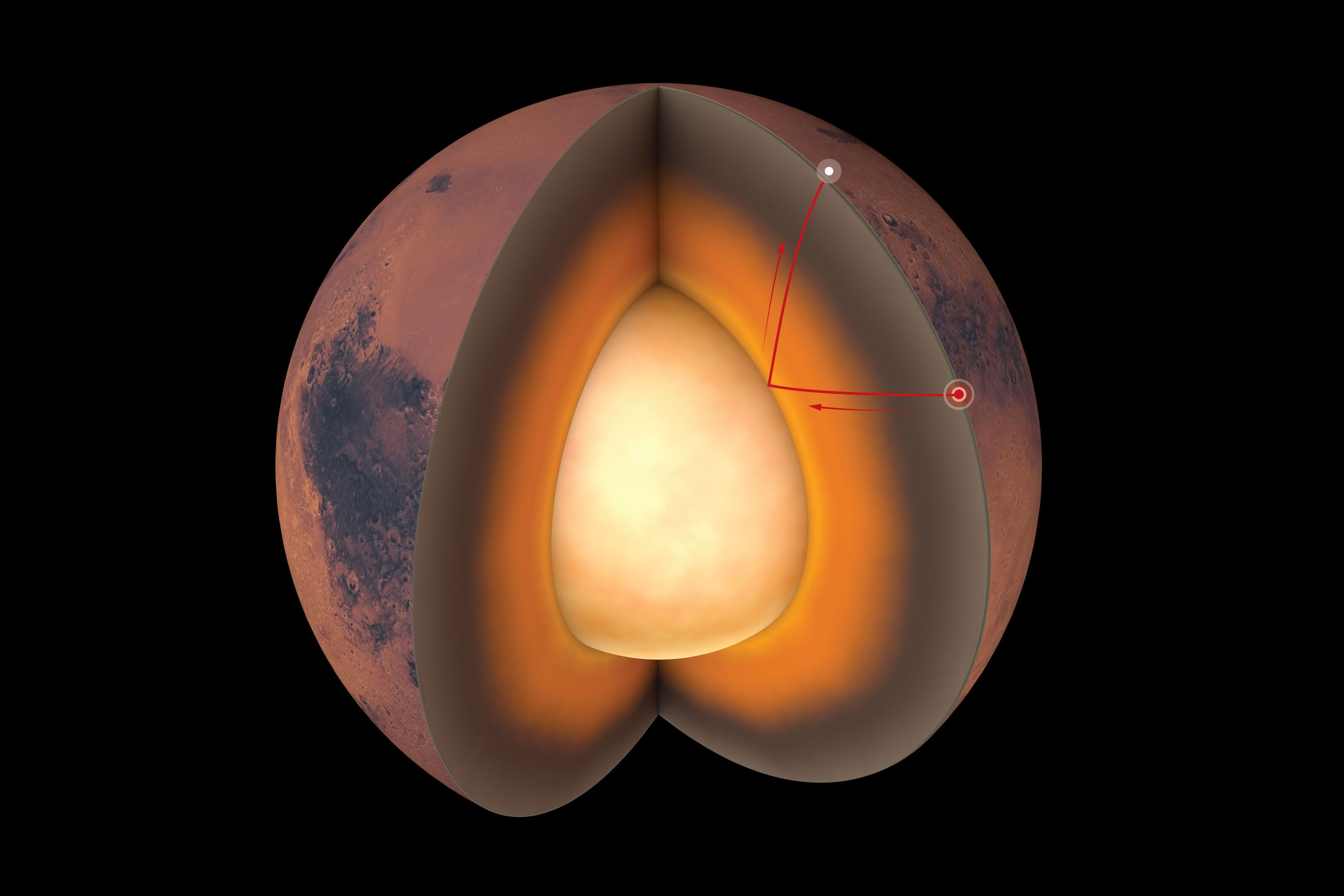Scientists mapped the mysterious interior of Mars for the first time ever
Mars' core takes up about half of the planet's interior — much larger than scientists expected.

Like a bruised peach sliced apart to reveal an enormous yellow pit, Mars shares its inner mysteries in the first-ever map of an alien planet's interior — released as part of three new studies published July 22 in the journal Science.
This premiere look at the Martian interior is the culmination of two years of research (and decades of planning) with NASA's InSight lander — a stationary science robot deployed to Mars in 2018 with the sole mission of studying the Red Planet's unseen innards. About a month after landing on the flat, smooth plain known as Elysium Planitia, InSight used its robotic arm to install a tiny seismometer on the nearby Martian surface, and began listening for marsquakes — seismic vibrations within the planet, similar to earthquakes on Earth.
Related: Here's what NASA's Opportunity rover saw before 'lights out'
"Unlike Earth, Mars has no tectonic plates; its crust is instead like one giant plate," NASA researchers wrote in a statement. "But faults, or rock fractures, still form in the Martian crust due to stresses caused by the slight shrinking of the planet as it continues to cool."
These fractures can result in seismic vibrations — and over the last two years, InSight has detected 733 of them. Using 35 of the largest marsquakes (each measuring between magnitude 3.0 and 4.0 ), NASA researchers calculated how fast and how far seismic waves were traveling within the planet, allowing them to map its interior structures.
The team found that, like Earth, the interior of Mars is composed of three layers — a crust, mantle and core — but the sizes and compositions of these layers differ considerably between the two worlds. The Martian crust, for example, is much thinner than the researchers expected, measuring between 12 and 23 miles (20 to 37 kilometers) deep and containing two or three sub-layers (for comparison, Earth's crust extends to a maximum depth of about 62 miles, or 100 km, according to the USGS).
Below the crust is a sizable mantle, extending about 969 miles (1,560 km) below the Martian surface, followed by a gargantuan core that begins about halfway between the surface and the center of the planet. The core — molten, like Earth's outer core — was both bigger and more liquid than the researchers expected.
Sign up for the Live Science daily newsletter now
Get the world’s most fascinating discoveries delivered straight to your inbox.
Scientists still don't know whether Mars contains a solid inner core, like Earth — however, merely measuring the planet's outer core after just a few years of study is a remarkable achievement, according to the researchers.
"It took scientists hundreds of years to measure Earth's core," Simon Stähler, lead author of one of the new papers and a professor of Earth sciences at the Swiss research university ETH Zurich, said in the statement. "After the Apollo missions, it took them 40 years to measure the moon's core. InSight took just two years to measure Mars' core."
Originally published on Live Science.

Brandon is the space/physics editor at Live Science. His writing has appeared in The Washington Post, Reader's Digest, CBS.com, the Richard Dawkins Foundation website and other outlets. He holds a bachelor's degree in creative writing from the University of Arizona, with minors in journalism and media arts. He enjoys writing most about space, geoscience and the mysteries of the universe.









